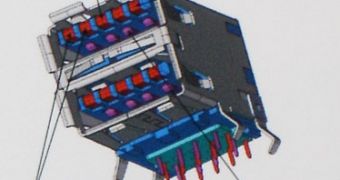Only a few of the computer users could imagine life without the common, yet efficient USB port. Things are about to get even better with the advent of the new set of USB 3.0 specifications that are to boost transfer rates across the old cables. Although the USB is vital to the IT industry, the upcoming version of the universal add-on standard re-engineered for the HD era was shortly introduced to the Consumer Electronics Show enthusiasts.
The USB 3.0 standard was not demonstrated in a live appliance, as we would have expected. Instead, the group that is backing it showed the enthusiasts its diagrams, its full-size connector, the socket it slips into and the new mini-socket. This is the wired version of the 3.0 standard, as the optical USB 3.0 has not been showcased at the show.
The USB 3.0 is the third release of the serial bus standard specifications (also known as the SuperSpeed USB). It is alleged to deliver amazing transfer rates to reach about 4.7Gb/s, almost ten times today's 480Mb/s limit. Unlike the second version of the protocol (that is a mere improvement of v1), the USB 3.0 is built from ground up while respecting some minimal requirements, such as the backwards compatibility with all the protocol's versions.
The new specifications set is announced to be compatible with all the USB products (1.0, 1.1 and 2.0 versions), cables and connectors. This may seem odd, as the 1.0-2.0 cables and connectors are using 4 pins, while the new 3.0 standard asks for five of them (the USB 3.0 wiring includes a high speed differential pair). However, this can be accomplished through a design trick: the USB 3.0 pins are placed right behind the USB 1.1/2.0 ones.
The initial 3.0 specifications set is due to be reviewed until the end of the month, but the final USB 3.0 standard is to be completed by the end of June 2008.

 14 DAY TRIAL //
14 DAY TRIAL //